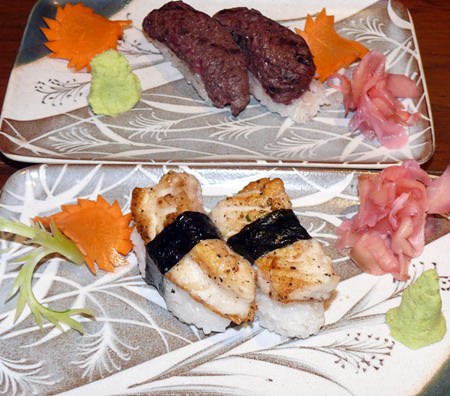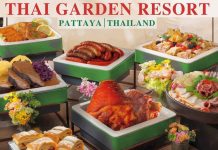If your ambition is to live to be 100, the Okinawa Express is now leaving from platform number three. According to the Japanese Health Ministry, Okinawans have an average life expectancy of 81.2 years – 86 for women and 75 for men (note for the marriageable – choose an Okinawan woman 11 years older than you are and go for a double cremation).
The other amazing fact was that Okinawan centenarians come in at about 34 per 100,000 of the population, almost three and a half times more than the figures from America. The consensus is that the longevity is a reflection of the Okinawan Japanese diet.
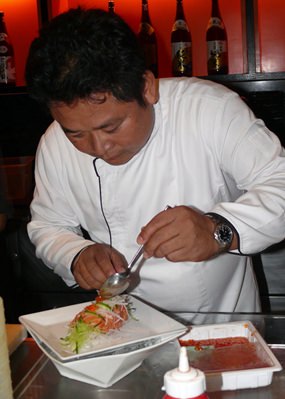 Chef Sumit
Chef Sumit
Of course, Japanese food has a very long and rich history, with many of today’s dishes being direct descendants of the items prepared 1,000 years ago. The dishes consumed then, included grilled fish and meat (yakimono), simmered food (nimono), steamed foods (mushimono), soups made from chopped vegetables, fish or meat (atsumono), jellied fish (nikogori) simmered with seasonings, sliced raw fish served in a vinegar sauce (namasu), vegetables, seaweed or fish in a strong dressing (aemono), and pickled vegetables (tsukemono) that were cured in salt to cause lactic fermentation. Oil and fat were avoided almost universally in cooking. Sesame oil was used, but rarely, as it was of great expense to produce.
During the Edo period, a third type of sushi was introduced, haya-zushi, a fast sushi that was assembled so that both rice and fish could be consumed at the same time, and the dish became unique to Japanese culture. It was the first time that rice was not being used for fermentation. Rice was now mixed with vinegar, with fish, vegetables and dried food stuff added. This type of sushi is still very popular today. Each region utilizes local flavors to produce a variety of sushi that has been passed down for many generations.
When Tokyo was still known as Edo in the early 19th century, mobile food stalls run by street vendors became popular. During this period nigiri sushi was introduced, consisting of an oblong mound of rice with a slice of fish draped over it. After the Great Kanto earthquake in 1923, nigiri sushi chefs were displaced from Edo to throughout Japan, popularizing the dish throughout the country.
Today the sushi dish internationally known as “sushi” (nigiri zushi; Kantô variety) is a fast food invented by Hanaya Yohei (1799-1858) in today’s Tokyo (Edo). People in Tokyo were living in haste even a hundred years ago. The nigiri zushi invented by Hanaya was not fermented and could be eaten using the fingers or chopsticks. It was an early form of fast food that could be eaten in public or in the theater, and very different from the soft drink and pop-corn on offer at our local cinemas.
So where did we go to sample genuine Japanese cuisine? The answer was in the Mantra restaurant, which has its own separate live Japanese food station. Whilst Mantra has other national cuisine stations, we decided we would spend the evening as Japanese and being kind to our bodies with a longevity factor a decided plus.
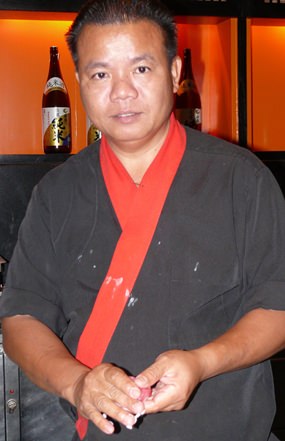 Chef Teerapong
Chef Teerapong
The Mantra restaurant is one of our favorite venues, and we began the evening in the cocktail area for a quick aperitif before moving into Japan (on the right as you enter the restaurant).
The first item for us to understand was the difference between sushi (raw fish on rice) and sashimi (raw fish). The presentation of the food is just sensational, and I was reluctant to break down the sculptures made from the Japanese ingredients.
It really was a splendid evening, with Japanese chefs Sumit and Teerapong displaying the art in Japanese cooking and also showing us that there are right and left handed knives. My favorite was the snowfish nigiri sushi while Madame went for the King crab tempura, but the range of dishes is amazing with 36 dedicated items, and even a Peking duck nigiri. Do go, you will not be disappointed.
Mantra Restaurant and Bar, Beach Road (just down from the Dolphin Circle), telephone 038 429 591, fax 038 428 165, [email protected]. Open seven days, Bar from 5 p.m., restaurant from 6 p.m. Valet parking available in secure car park.
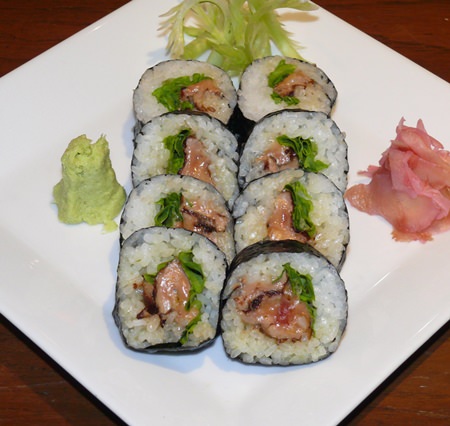 Nigiri sushi
Nigiri sushi
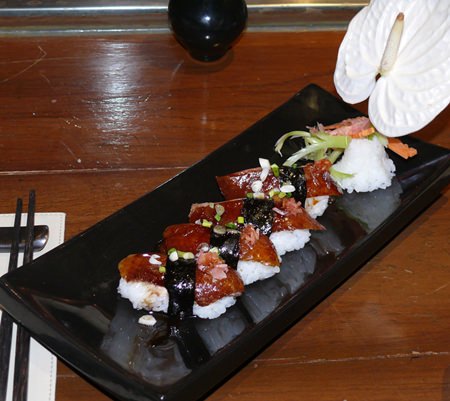 Peking duck
Peking duck
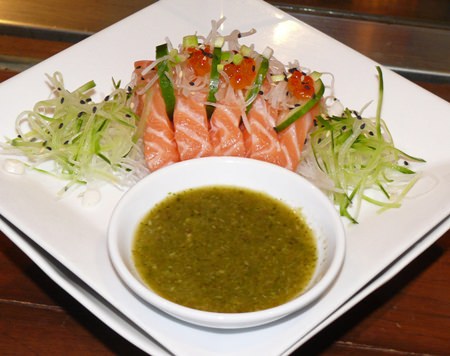 Salmon sashimi
Salmon sashimi
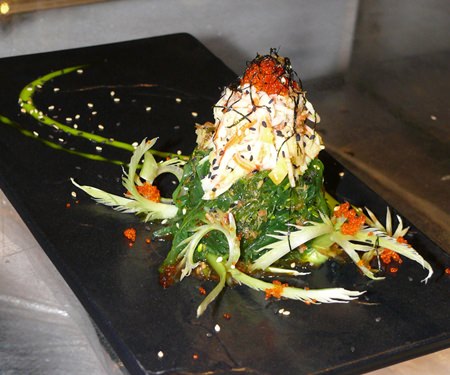 Seaweed crab salad
Seaweed crab salad
